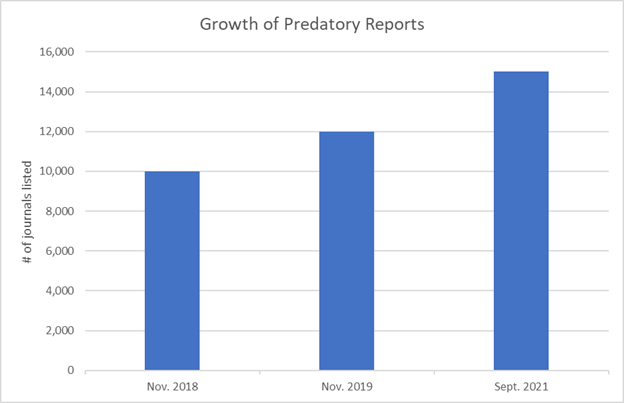Preprints: Community over commercialization in action

The ability to access and share knowledge is fundamental to advancing research. However, commercial interests often mean one or both of these is restricted. “Community over Commercialization” has taken a central stage for Open Access Week for the past two years for a good reason. It’s a recognition that commercial interests are interfering with how we produce and share knowledge through research. These interests impact the what, the when, and even, the why — and inevitably, they limit who is able to participate and how.
Since their inception, preprints have provided free and rapid access to research — promoting community engagement and discussion of new ideas. However, despite numerous efforts, their potential remains largely unrealized. As a result, preprints are in many ways the unsung hero of the Open Access movement.
Article Processing Charge (APC)-driven Open Access has created a perfect storm — the perverse incentives for authors to publish met the perverse incentives for publishers to publish. And, rather than solving issues of inequity in publishing, it just flipped them from who can afford to read to who can afford to publish.
Preprints — A new solution?
Definitely not new! Despite their growing adoption over the last decade, preprints have been around much longer. Preprints were first introduced in the 1960s, with the National Institutes of Health (NIH) sharing them through postal email with Information Exchange Groups (IEGs). However due to budget constraints and criticism, the NIH had to dissolve the movement. Later, the first preprint server (arXiv – for physics, mathematics, and computer science) was introduced in the 1990s. However, the movement gained impetus in the later years, especially in the last three decades, with the introduction of preprint servers in other subject areas. Furthermore, government declarations and initiatives such as the Chan Zuckerberg Initiative, Plan U, EMBO Review Commons’ mandate, and the Bill & Melinda Gates Foundation’s 2025 policy expedited their adoption in the last decade. Additionally, the COVID-19 pandemic played an important role in the adoption and acceptance of medical preprints. When lives were on line, the speedy knowledge access outweighed the value of journal-based peer review.
Source: https://pmc.ncbi.nlm.nih.gov/articles/PMC8014163/
While the growing number of preprints exemplifies the increasing support to the Open Access movement, it also reflects the changing dynamics in research dissemination, communication, and engagement. Research data, which once were confined to the academic community, certain institutions, or regions due to the subscription-based models, have become available to the wider community — providing a platform for community engagement and building.
Why Preprints Over Traditional Publishing Models?
The traditional models of publishing have two major issues — paywalls and timeline. While the changing economics of journal publishing and governments and funder mandates have given an impetus to open access publishing, they have introduced layers to information access, providing certain regions and institutions an upper hand.
Instead, preprints offer a free, fast, and fair way to share your research. From zero/low-paper costs and operations to rapid provision of information, preprints provide an early and equitable access to research, promoting further scientific inquiry.
However, one of the main criticisms that preprints face, is a worry that it opens the floodgates to poor-quality research becoming a part of the scientific record. Well, it does make it easier to get research published without gatekeeping. But it’s not as scary as it sounds.
First, let’s not pretend that journal filtration is a reliable safeguard of quality — looking at you — 2023, a year red-marked by over 10,000 retractions of published research! As “Retractions” and “Predatory Journals” have been buzzing lately, it calls to rethink the credibility and reliance of journal-published articles.
More recently, two mega journals, owned by Springer and Elsevier, have recently been placed on hold by Web of Science due to quality concerns; a group of prominent research integrity sleuths have written an open letter expressing concerns about articles in Scientific Reports; and all this while another journal continues to make mass retractions. Furthermore, predatory journals, which were reported to have risen to almost 15,000 in 2021, have questioned the overall authenticity of “journal-published articles/research.”

Source: https://blog.cabells.com/2021/09/01/mountain-to-climb/
So, here’s some food for thought. Is getting published in an indexed journal a sole metric to establish research validity? Are preprints really worse than journal-reviewed articles, considering the current scenario? Research suggests there’s not much difference in the quality between preprints and their peer-reviewed and published counterparts.
In the current situation, where authenticity or validity of peer-reviewed articles isn’t guaranteed, can we blindly accept that all preprint findings are legitimate? An infamous preprint (now retracted) suggesting SARS-CoV-2 to be a genetically engineered variant of HIV, stirred controversies and waves of debates on social media and academic discussion groups. However, following this event, bioRxiv (the platform hosting the controversial preprint) implemented a cautionary notice on their site.
Every coin has two sides! While this incident highlights the threat of pseudo/fake science over information access, it also exemplifies how wider community engagement and public review can question dubious findings, pull down false research, and maintain research standards.
Building Community Through Preprints
Preprints are definitely powerful catalysts for research community building, transforming how researchers connect and collaborate. They create dynamic spaces where researchers can engage in open dialogue, share early feedback, and foster meaningful collaborations across institutional and geographical boundaries. Additionally, they democratize access to cutting-edge research, enabling scientists from resource-limited institutions to participate in global dialogue.
The comment sections on preprint platforms serve as virtual meeting grounds where established researchers, early-career scientists, and subject matter experts can exchange ideas, offer constructive criticism, and identify potential collaborations. Additionally, the rapid dissemination of preprints during global challenges showcases their power in uniting the academic community for addressing urgent research needs while collective problem-solving.
Are Preprints the Endgame of Open Access Publishing? Envisioning the Future
Although preprints are here to stay, they don’t need to be an endpoint for the future of research communication. Additional infrastructure, organizations, and publishing models are building on the benefits of preprints through post-publication peer review and publish-review-curate (PRC) publishing models. eLife’s Reviewed Preprint model is one adoption of a fully PRC approach centered on preprints, but there are options such as F1000 and more on the near horizon.
Today we see a much more vibrant preprint landscape across disciplines. Most journals will now accept research that was previously shared as a preprint and there are dedicated preprint repositories for a wide range of disciplines and geographies. As the publishing landscape continues to rapidly evolve with new trends and policies, here’s what we envision for the future:
- Uniform and standardized adoption of preprint repositories across the publishing industry
- Implementation of in-built preliminary screening systems and automated research integrity checks to verify information validity and authenticity (at a preliminary level) during manuscript submission to minimize the risk of perpetuation of fake data
- Establishment of clear guidelines and prominent messaging for potentially harmful or dangerous content
- Active promotion of a universal post-publication peer review model — which is not publisher or journal centric
- Association of preprints and articles with a public review history, including both journal-led peer review and community review
- Encouraging summary notes for changes between article versions and all versions of an article’s history to be linked
- Inclusion of moderation systems for comments and feedback to promote healthy community engagement
The aim is to facilitate communication and conversations between experts and community-driven initiatives to maintain the highest standards of research.
“You are not a drop in the ocean, you are the ocean in a drop.”
– 13th century Persian poet Rumi
Post a preprint; change the world! A single preprint might be just one drop in a vast ocean of research, but the more this practice becomes commonplace, the more we can shift the tide toward community-led and community-first approaches in publishing.
As science communicators and STM enthusiasts, it’s uncommon for us to wish for a genie that grants access to any information around research publishing! Have you ever been stuck in a similar situation, where you wanted to read an article and found it was behind a paywall and your institution haven’t subscribed to that journal? Did you reach out to the authors? Did you look for a preprint? Next time you face this, check out the unpaywall browser extension which finds deposited preprints of articles when they are available.
You can help the community to overcome this dilemma by doing your bit in promoting research accessibility by posting your research as a preprint and making sure when someone is looking for your research they can find it for free. You’re not only helping some nameless, faceless stranger from the future; but also creating a citable and shareable record of your work that has its own DOI! You’ll have established your priority for the research and your findings — no danger of being scooped while you’re in peer review limbo. And you’ll have the chance to get informal feedback ahead of journal publication, a feedback when it’s more likely to make a difference rather than six months later, when half your team has left and your focus has moved on to other projects.
Finally, posting a preprint helps increase equity in scholarly communication. It does this on your immediate community level. You as a preprint author (Hey… you dropped your cape!) have the benefit of being able to share your work freely and know your work will always be available for anyone with an internet connection to read, cite, and build on. But it also does this at a wider community level — every preprint posted pushes the needle toward fairer modes of research communication and adds weight to arguments for change.
Let’s unite in advocating, promoting, and contributing to the growth of preprints to build a more inclusive and collaborative space for open dialogue, meaningful discussions and community engagement. After all, access to information is a right, not a privilege!










